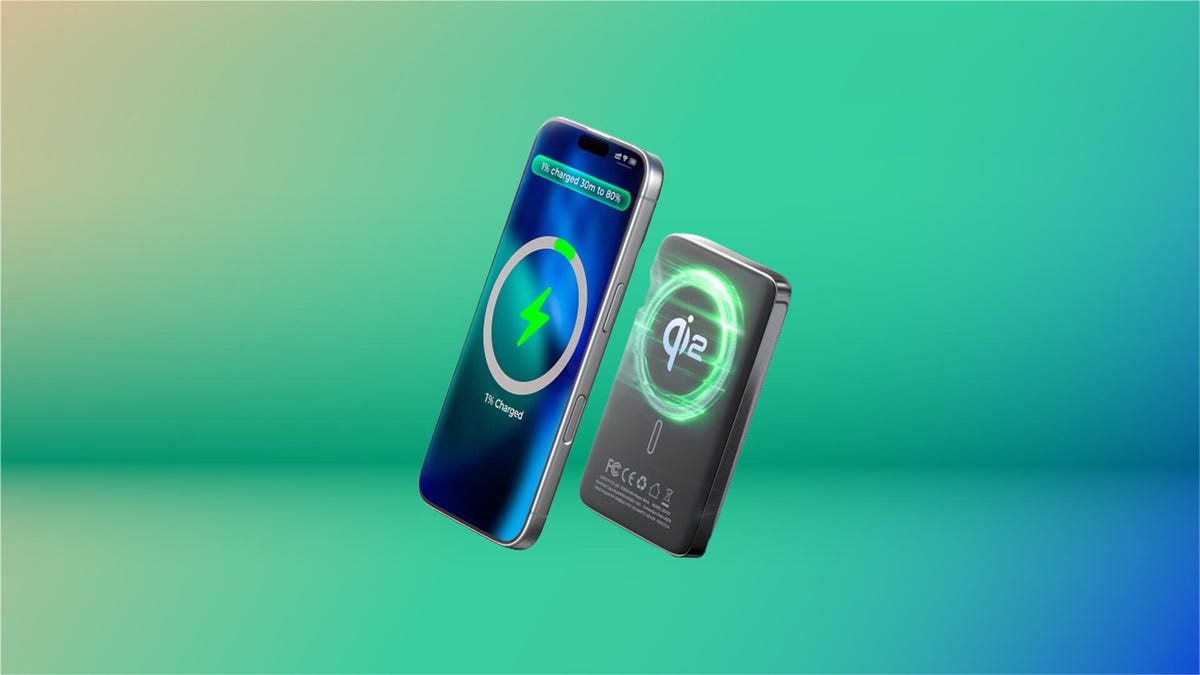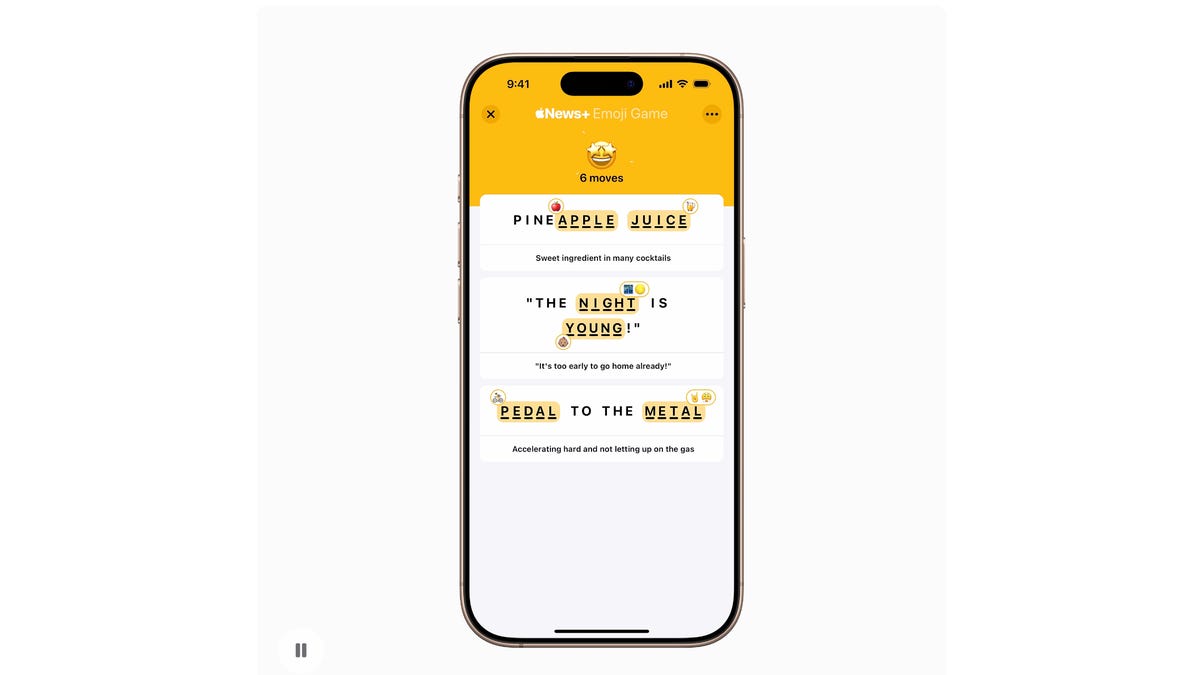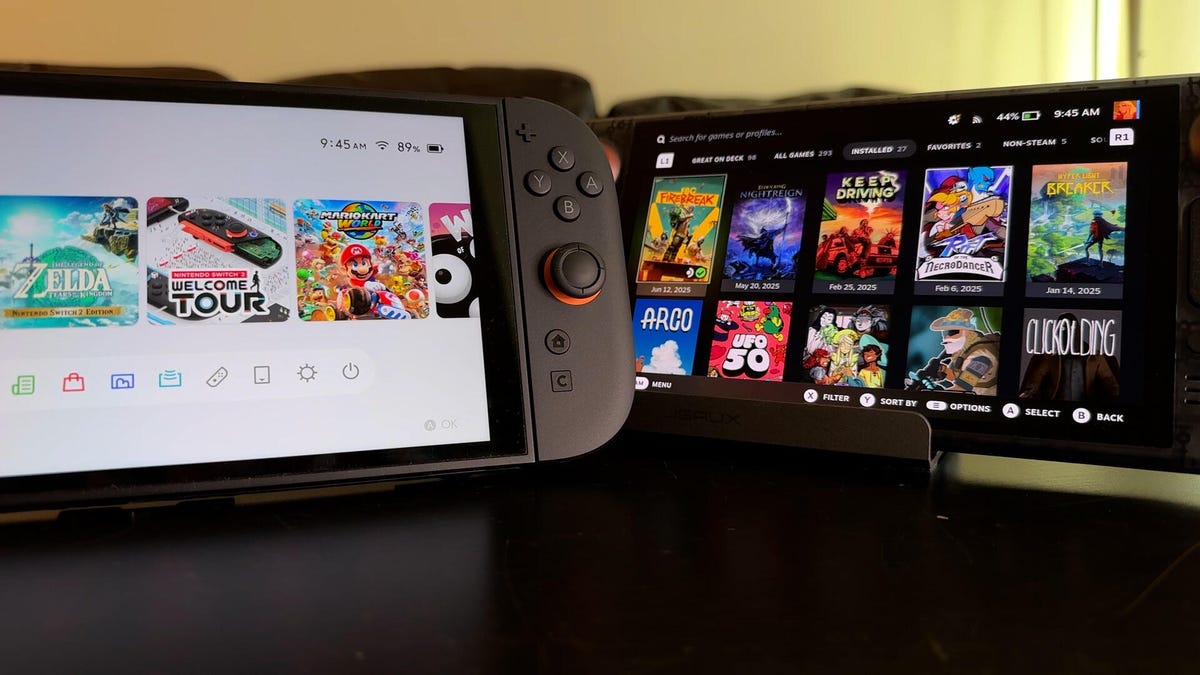Technologies
Prime Day: Get the Lisen MagSafe Power Bank at 20% Off and Score a Free Battery Pack
A discounted power bank is good enough on its own, but getting two for one already low price is a no-brainer.

The battery life on the iPhone 16 is already pretty good, but sometimes an extra bit of power is warranted. After all, you may be out camping, traveling or doing some other activity where a wall charger isn’t available. For those times, a power bank could be exactly what you need to get you through that second day.
For Amazon Prime Day, Lisen is putting its money where its mouth is. Not only is the Slim Qi2 MagSafe power bank on sale for 20% off with a coupon code, but the brand is also giving away another power bank for the low, low price of nothing.
To get the deal, you have to add the Slim Qi2 MagSafe power bank to your cart along with the Lisen Ultra Slim MagSafe 5,000mAh battery pack. Once done, head to checkout and you’ll see that the $25 price of the battery pack is removed.
Since it’s difficult (but not impossible) to mess up a power bank in this day and age, both should serve you well. They work as you would expect. Open the package, pop them on the back of your MagSafe-compatible phone, and watch your battery charge.
According to the Amazon listing, it’s compatible with modern iPhones and Samsung Galaxy phones with MagSafe and with MagSafe-compatible cases as well. Both chargers feature wired charging if you want to use that option, making them compatible with a non-MagSafe phone.
For the Slim Qi2 model, you can charge at 15 watts over MagSafe or 30 watts wired. The smaller Ultra Slim model does 7.5 watts over MagSafe and 18 watts wired. Otherwise, what you see is what you get with these, and sometimes, we appreciate the simplicity.
Tired of shopping for deals? Let CNET help. Our deal text alerts are free, easy to sign up for, and easy to cease when you no longer need them. Let us do the shopping for you.
Why this deal matters
Well, for starters, I haven’t yet seen a BOGO offer that wasn’t worth at least a look. Jokes aside, having two power banks can be helpful. You can pack the bigger one away in a bag for later use while the Ultra Slim model is thin enough to be there in your pocket without feeling too bulky or obtrusive. The smallest iPhone 16 has a battery capacity of 3,561mAh, while the iPhone 16 Pro Max has a battery of 4,685mAh. That means these two batteries combined can charge your phone at least three full times, regardless of model.
Should you want only one of these, both also have 20% off coupon codes that you can apply once they reach your cart. However, be warned that the BOGO offer overwrites the coupon code, so you can’t do both. We checked.
More power banks we’ve tested
Power banks are a dime a dozen these days, with dozens of brands selling hundreds of products. If this particular model doesn’t strike you, we have not one, but two lists of alternatives that you can check out. One specifically for iPhones, and we tested each battery bank on the list with an iPhone to make sure it works. The other is for Android phones, and, likewise, we tested to make sure they all work to spec with Android devices.
Technologies
Apple’s New Emoji Game Gives You a Smiley Wordle Alternative
The addition to Apple’s suite of games launches just in time for World Emoji Day.

Do we 💖 this? Just in time for World Emoji Day, Apple News Plus has launched Emoji Game in another indication that we will never have enough digital toys to entertain and divert us.
In the new game — available in English for News Plus subscribers in the US and Canada — players will try to fill in the blanks of three short phrases using a selection of emoji and genmoji using as few moves as possible. For example, if the phrase is «- — — — — of my — — -» («Apple of my eye»), then you would use the 🍏 and 👀 emoji to fill in those blanked-out words.
There will be clues for each of the three phrases, but if the player chooses to reveal any of the clues, that will count as a move. Game Center leaderboards will track results, and players can share their accomplishments with friends and family on messages, email and social media.
«Emoji Game is the perfect addition to the Apple News+ suite of word and number puzzles, turning the emoji we use every day into a brainteaser that’s approachable and fun,» said Lauren Kern, editor-in-chief of Apple News, in a press release.
Emoji Game will appear daily in the Puzzles section of the Apple News app, and Apple News Plus subscribers can also play the puzzle in the Apple Games app, which will launch later this year and will host Emoji Game as well as crossword, crossword mini, Quartiles and sudoku.
Only hours after the announcement, the r/apple subreddit was already popping with reactions:
- «I wish we had that in my country. I love the nyt games Id like to try apple ones»
- «I just tried it, it’s pretty fun»
- «Looks like fun!»
For now the game is available in English for Apple News Plus subscribers in the US and Canada and for iPhones, iPads and Macs running iOS 18.4, iPadOS 18.4 or MacOS 15.4 or later. Apple News Plus costs $13 per month after a free trial period.
Technologies
Waymo Expands in Austin. Everything to Know About the Robotaxi
Here’s everywhere the self-driving service operates now, and where it’s slated to arrive in the future.
Technologies
Switch 2 vs. Steam Deck: Battle of the Handhelds
I put the two leading handhelds up against one another to find out which is the best.

I’ve been spending a lot of time playing with the new Nintendo Switch 2 and Valve’s 2023 Steam Deck OLED to find out which handheld gaming console is best for me. Will Nintendo’s flagship franchise take it to victory? Or will the Steam Deck’s open platform give it the edge? I’ve been comparing the two based on performance, hardware and games library and, so far, while there’s one I prefer, each one has advantages that stand out.
Library
Arguably the most important aspect to comparing these two handhelds is the games you’re able to play on them. What good is great battery life if there’s nothing you want to play?
The Switch 2 will get you access to all of Nintendo’s own games and can play most of the first Switch’s games such as The Legend of Zelda: Tears of the Kingdom, Super Mario Bros. Wonder and Metroid Dread. There aren’t that many Switch 2 exclusives yet. Mario Kart World, Welcome Tour and Donkey Kong Bananza are the biggest ones for now, but so far they’ve all been really good — even if Welcome Tour is just a glorified instruction manual full of mini games (that I do like).
Many of the original Switch games have received performance improvements, some of them bigger than others. Pokemon Sword and Shield got a major update for free. But the upgrade editions for Breath of the Wild and Tears of the Kingdom cost $10 each — unless you’re a Switch Online premium subscriber, in which case they’re free, too. More upgraded games are coming, including Mario Party Jamboree. If you’re looking to play Nintendo games, the Switch and Switch 2 are the only ways to do so.
On the other hand, the Steam Deck is an open ecosystem and grants you access to buying games from multiple types of online stores. Valve’s Steam Deck is primarily set up to run off Steam, but you can load in other ways to play games with a little tinkering. Even if you never load in other game stores, Steam has a ton to discover, including lots of Steam Deck-optimized games.
Both Switch and Steam Deck get a good amount of indie titles, but you’ll typically find that they launch on PC first. The Steam Deck can also run a lot of smaller, experimental stuff that’ll never make its way over to Switch. The Steam Deck can also play games from cloud-based platforms such as Xbox Cloud Gaming or GeForce. One of my favorite things to do with my Steam Deck is to remote play into my Xbox Series X or PS5 at home and play those console games when I’m on the go.
If you don’t mind missing out on Nintendo exclusives, the Steam Deck gets you a larger and more robust gaming library.
Ease of use
The Switch 2 is definitely the most straightforward of the main gaming consoles. It’s a dedicated gaming machine, so it’s very stable but some aspects can be annoying — such as trying to add a friend to play, which involves entering in a long friend code. That said, Steam Deck is also a good experience out of the box, but it has its own tricky moments that can be daunting if you want to push the system’s capabilities. Trying to hook into other game libraries will require watching tutorials, installing extra software — it’s not the easiest thing to do.
The Switch 2 also comes with two Joy-Con controllers that detach and work independently, meaning local multiplayer is extremely easy right out of the box. To match this on the Steam Deck, you’d need to purchase two additional third-party controllers. Plus, the Switch 2’s included dock makes TV-connected gaming a lot easier to set up than with the Steam Deck, and the Switch 2’s kickstand allows tabletop co-op pretty easily, too.
The Switch 2 also has built-in chat to easily connect with friends, although you’ll need a compatible USB camera to add video. Gamechat requires a Nintendo Online subscription, while the Steam Deck can use standard free online chat apps, such as installing Discord, just like how you would install a third-party storefront.
Display
The Switch 2 has a 7.9-inch LCD display that can output a 1080p image at 120Hz. The Steam Deck comes with either a 7-inch LCD or 7.4-inch OLED screen that outputs a lower 1,280×800-pixel resolution at 60 or 90Hz, respectively. But if you’re playing on a television, you’ll get a 4K image with both systems as long as you plug the Switch 2 into its dock and use the right HDMI cable with the Steam Deck. It’s worth noting a dock comes bundled with the Switch: For the Steam Deck to connect to a TV, you’ll need to purchase the cable or accessory separately.
Despite not having a nicer OLED screen, I prefer the Switch 2’s larger and faster display, especially when that screen size still allows for a smaller device overall.
Portability
The Switch 2 weighs a little less — it’s 534 grams compared to 640 grams for the Steam Deck OLED. The Switch 2 is also noticeably smaller and much thinner, making it more portable to transport. And as someone who backpacks and travels a lot, and often brings a handheld device in my bag, I need to make use of all the space I can get.
But the Steam Deck does feel better to hold in your hand. The larger size means its handgrips are comfier to grab on to, and the built-in back buttons are a nice, pro-style feature that you can only get on the Switch 2 if you buy a Pro Controller or Charging Grip. It’s also worth mentioning that the Steam Deck includes a carrying case with your purchase. The Switch 2 does not, which you’re definitely going to want to protect its big screen.
Battery
When you’re on the go, battery life makes a huge difference. The Switch 2 has a 5,220-mAh battery and Nintendo says that gets you roughly between two and six and a half hours of gaming. The Steam Deck OLED has a larger 6,470-mAh battery and Valve says it’ll last somewhere between three and 12 hours. Bottom line: The Steam Deck will generally keep you gaming longer. This depends on the game but it lines up pretty well with what I’ve experienced. More graphically-intense games such as Elden Ring Nightrein will drain the Steam Deck’s battery faster, while Balatro will last longer. Mario Kart World gets around three to four hours for the Switch 2.
Storage and price
The Steam Deck comes in three configurations: A $399 LCD model with 256GB of internal storage, a $549 OLED model with 512GB of internal storage, and a $649 OLED model with 1TB of internal storage. The Switch 2 has just one option — 256GB of internal storage with an LCD screen for $450. Both devices can take microSD cards to increase their storage capacity. However, the Switch 2 requires the newer microSD Express cards, which are still quite pricey. The Steam Deck has a cheaper entry price, and the additional storage and screen options are nice to be able to choose from. But the Steam Deck is also a couple years older and has already seen discounts since launch.
One big difference, though, is game prices. Switch games rarely go on sale, and Nintendo keeps its first-game prices high over time. Meanwhile, games on Steam can definitely save you some cash — Steam games often launch at cheaper prices than their Xbox, PlayStation or Nintendo counterparts, and often see drastic discounts as the months go on. Steam sales happen all the time, and it’s easy to scoop up deals and suddenly find that you have more games in your library than you have time to play.
Another added cost for Switch 2 is online multiplayer, which requires a subscription to Nintendo Switch Online. You’ll get perks for your subscription, including access to a large catalog of older Nintendo games from systems you may have had in your childhood, but I personally prefer my multiplayer to be free of charge. (I have more than enough subscriptions in my life.) Still, local multiplayer is much easier to pull off with the Switch 2 and doesn’t require buying multiple additional cables and controllers, like you’ll need on Steam Deck.
Overall
I love Nintendo’s legendary catalogue of games, but for me the Steam Deck offers a better bang for my buck. There’s a wider overall selection of titles on Steam and almost every developer puts their games on PC right away. It also offers a cheaper entry price and more model variations to choose from. While I do value the sleek more portable size of the Switch 2, the discounts on Steam games are hard for me to ignore compared to Nintendo’s much more rigid pricing.
Personally, I’m finding there is far more to do with a Steam Deck. But if you can’t live without Mario and Zelda, and you’re interested in ways to play games with family and friends together in the same room, you’re going to really appreciate the Switch 2.
-

 Technologies3 года ago
Technologies3 года agoTech Companies Need to Be Held Accountable for Security, Experts Say
-

 Technologies2 года ago
Technologies2 года agoBest Handheld Game Console in 2023
-

 Technologies2 года ago
Technologies2 года agoTighten Up Your VR Game With the Best Head Straps for Quest 2
-

 Technologies4 года ago
Technologies4 года agoVerum, Wickr and Threema: next generation secured messengers
-

 Technologies4 года ago
Technologies4 года agoGoogle to require vaccinations as Silicon Valley rethinks return-to-office policies
-

 Technologies4 года ago
Technologies4 года agoBlack Friday 2021: The best deals on TVs, headphones, kitchenware, and more
-

 Technologies4 года ago
Technologies4 года agoOlivia Harlan Dekker for Verum Messenger
-

 Technologies4 года ago
Technologies4 года agoiPhone 13 event: How to watch Apple’s big announcement tomorrow

